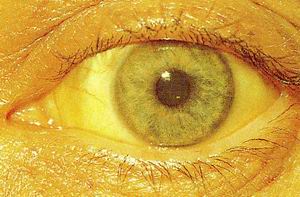|
LIVER FAILURE; LIVER FUNCTION The liver is the largest solid organ in the body. The word "hepatic" pertains to the liver. It is located under the right lung. It has many important functions, including regulation of blood sugar and other nutrients, production of bile (necessary for absorbing fats and other nutrients), blood clotting, infection control and removal of toxins from the blood. Liver failure can develop for many reason. Examples include low blood flow or shock, chronic disease (such as alcoholism or heart failure) or infection. When the liver fails, toxins can accumulate in the blood, the blood sugar may become low and the patient may bleed as a result of decreased clotting factors. Severe liver failure can also cause brain swelling. The liver contains a number of enzymes that are important to the liver's normal function. If the liver is damaged, these enzymes can enter the circulation and become elevated in the blood stream. A liver function test measures the presence of liver enzymes in the blood. Enzyme levels escape from damaged liver cells (called hepatocytes) and enter the blood. Liver enzymes that are measured to evaluate liver function include Alanine Aminotransferase (ALT), Aspartate Aminotransferase (AST) and alkaline phosphatase. Red blood cells usually survive for about 120 days. When they die, they release bilirubin, a substance that produces a yellow pigmentation. The liver plays an important role in removing bilirubin from the blood, using some of it to make bile. An increase in the amount of bilirubin in the blood causes the skin and eyes to turn a yellow color, a condition called jaundice. Although jaundice occurs in liver failure, jaundice can also develop for a number of other reasons. |
Image 1: Liver |
|
Image 2: Liver failure is one reason for jaunice. The skin and eyes become yellow. |
|
|
|
|
|
|
Our masking guidelines have been updated. Visit the Patient and Visitor Masking Guidelines page for more information.





